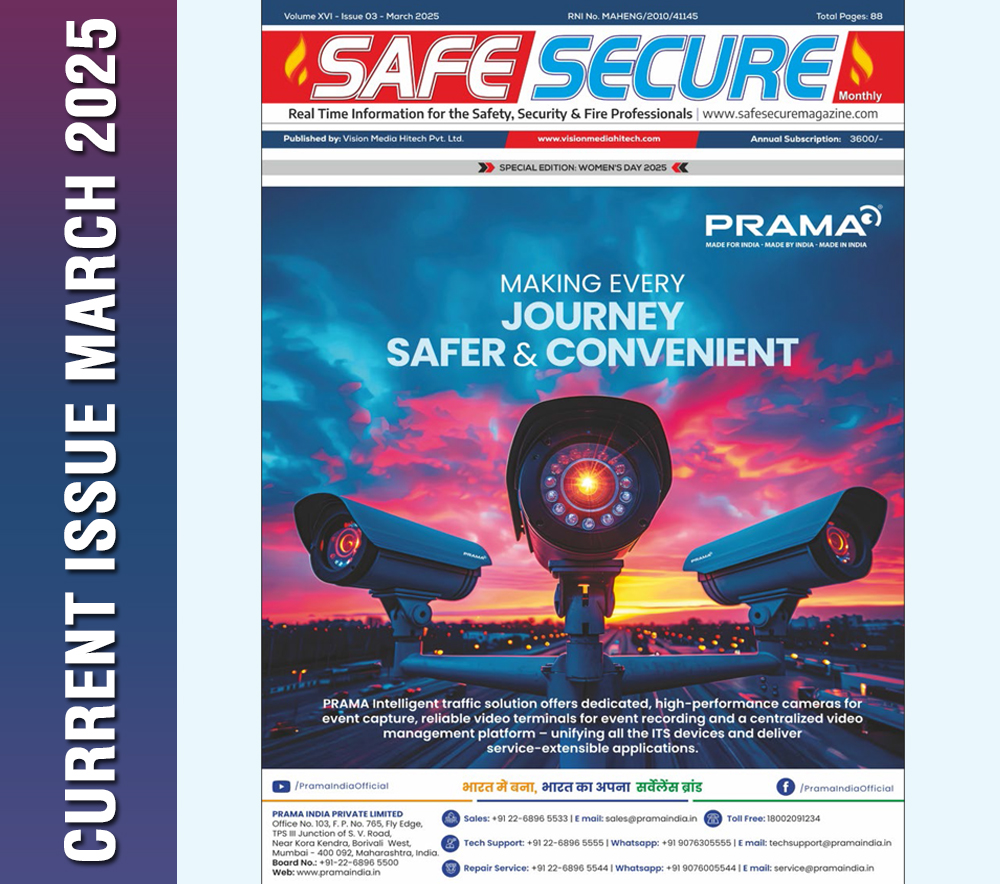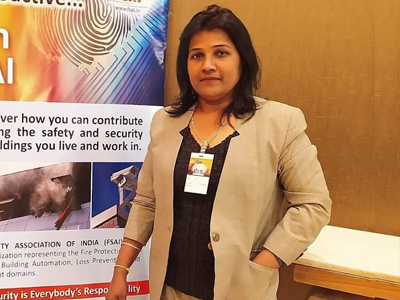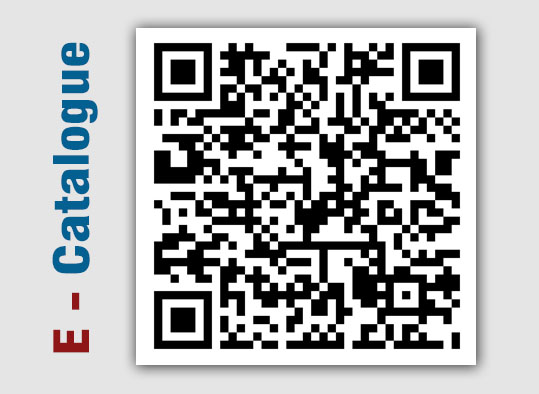MAINTENANCE AND INSPECTIONS OF FIXED CO2 EXTINGUISHING SYSTEMS
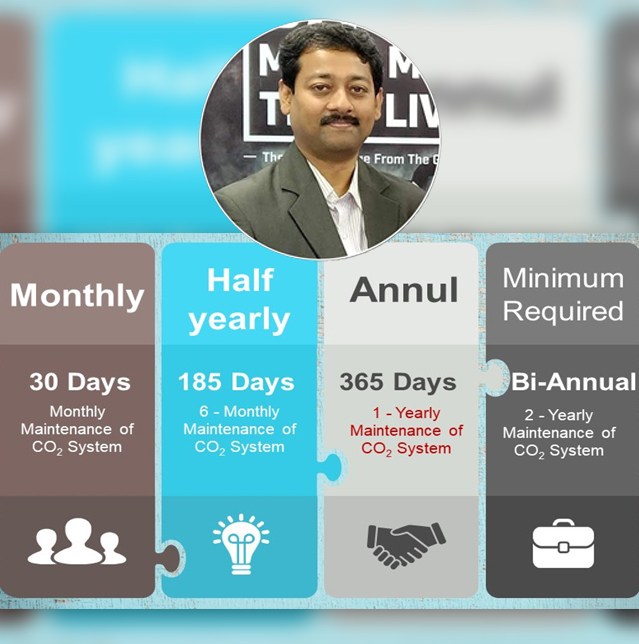
-by Dr. Arindam Bhadra
Hello everyone, we are often asked, "What CO2 level is dangerous?" CO2 levels above 40,000ppm (4%) are life threatening. However, there are many other limits placed on carbon dioxide levels depending on your application.
These limits are defined by agencies such as the Occupational Health and Safety Administration (OSHA) and other regulatory bodies.
Safety guidelines:
The US a workplace safety standard is set by OSHA and it defines gas standards, like CO2. It states that CO2 danger levels begin at 5,000ppm (0.5%) Time Weighted Average (TWA) for an 8-hour period. This means that the average concentration cannot exceed 5,000 ppm over an 8-hour work cycle.
Furthermore, OSHA defines 30,000ppm (3.0%) as it's evacuation threshold. This means the once the CO2 concentration hits 30,000ppm nobody should be in the space for more than 15 minutes.
Note that carbon dioxide is not generally found at hazardous levels unless there is limited ventilation where gas is being stored or produced, or where the room is considered a confined or enclosed space.
Additional compressed gas guidelines for CO2 include but are not limited to:
1. Never opening a damaged valve
2. Avoiding direct skin contact with extremely cold liquids or compressed gases escaping from the cylinder
3. Never wear watches, rings, or bracelets because they can freeze to exposed skin if splashed by an ultracold gas
4. Always wear insulated gloves to protect against the cold
At least every six months, (or more frequently if required by an appropriate authority), the mechanical parts of the system should be thoroughly inspected and tested for proper operation by competent personnel. Any electrical detection systems should be tested quarterly in accordance with the requirements of BS 5839-1: 2017.
1. Monthly Inspections
1. At least every 30 days a general visual inspection should be made of the overall system condition for obvious signs of damage, and should include verification that:
1.1 all stop valves are in the closed position;
1.2 all releasing controls are in the proper position and readily accessible for immediate use;
1.3 all discharge piping and pneumatic tubing is intact and has not been damaged;
1.4 all high pressure cylinders are in place and properly secured; and
1.5 the alarm devices are in place and do not appear damaged.
In addition, on low pressure systems the inspections should verify that:
1.6 the pressure gauge is reading in the normal range;
1.7 the liquid level indicator is reading within the proper level;
1.8 the manually operated storage tank main service valve is secured in the open position; and
1.9 the vapour supply line valve is secured in the open position.
2. Annual inspections
The following minimum level of maintenance and inspections should be carried out in accordance with the system manufacturer’s instructions and safety precautions:
2.1 The boundaries of the protected space should be visually inspected to confirm that no modifications have been made to the enclosure that have created un-closeable openings that would render the system ineffective;
2.2 All storage containers should be visually inspected for any signs of damage, rust or loose mounting hardware. Cylinders that are leaking, corroded, dented or bulging should be hydrostatically retested or replaced;
2.3 System piping should be visually inspected to check for damage, loose supports and corrosion. Nozzles should be inspected to ensure they have not been obstructed by the storage of spare parts or a new installation of structure or machinery;
2.4 Check all control valves for correct manual function and automatic valves additionally for correct automatic function. Externally examine containers for signs of damage or unauthorized modification, and for damage to system hoses.
2.5 The manifold should be inspected to verify that all flexible discharge hoses and fittings are properly tightened; and
2.6 All entrance doors to the protected space should close properly and should have warning signs, which indicate that the space is protected by a fixed carbon dioxide system and that personnel should evacuate immediately if the alarms sound. All remote releasing controls should be checked for clear operating instructions and indication as to the space served.
2.7 Carbon dioxide containers, check weigh or use a liquid level indicator to verify correct content of containers. Any showing a loss of more than 10% to be replaced or refilled.
The service life of the cylinders is checked on each visit; every ten years, these are due for Hydrostatic Pressure Testing. When the Hydrostatic Pressure Testing is due, a separate quotation will be issued for this work. The CO2 cylinder hydrostatic test pressure can be anywhere from 3,000 to 10,000 psi. Stored as a liquid at an ambient temperature of 70ºF (21ºC) carbon dioxide has a vapor pressure of approximately 850 psi (5865 kPa). Thus, high pressure cylinders are used for storage, designated as High Pressure CO2.
On each visit to service the electrical detection system, a number of tests and checks, as laid down, are carried out on the control and indicating equipment and the power supply unit output voltage and battery charging rate are measured and recorded.
The system is then tested under mains fail conditions to prove the standby batteries using at least one break glass call point and smoke detector in every zone.
On completion of the test, the battery voltage is measured and recorded, and the system is restored to normal operation.
3. Other minimum recommended maintenance
1. At least biennially (intervals of 2 years ± 3 months) in passenger ships or at each intermediate, periodical or renewal survey in cargo ships, the following maintenance should be carried out.
The following maintenance should be carried out.
1. All high-pressure cylinders and pilot cylinders should be weighed or have their contents verified by other reliable means to confirm that the available charge in each is above 90% of the nominal charge. Cylinders containing less than 90% of the nominal charge should be refilled.
> The liquid level of low-pressure storage tanks should be checked to verify that the required amount of carbon dioxide to protect the largest hazard is available.
2. the hydrostatic test date of all storage containers should be checked. High pressure cylinders should be subjected to periodical tests at intervals not exceeding 10 years. At the 10-year inspection, at least 10% of the total number provided should be subjected to an internal inspection and hydrostatic test.
>> If one or more cylinders fail, a total of 50% of the onboard cylinders should be tested. If further cylinders fail, all cylinders should be tested. Flexible hoses should be replaced at the intervals recommended by the manufacturer and not exceeding every 10 years.
3. the discharge piping and nozzles should be tested to verify that they are not blocked. The test should be performed by isolating the discharge piping from the system and flowing dry air or nitrogen from test cylinders or suitable means through the piping.
The service life of the cylinders is checked on each visit; every ten years, these are due for Hydrostatic Pressure Testing. When the Hydrostatic Pressure Testing is due, a separate quotation will be issued for this work.
On each visit to service the electrical detection system, a number of tests and checks, as laid down, are carried out on the control and indicating equipment and the power supply unit output voltage and battery charging rate are measured and recorded. The system is then tested under mains fail conditions to prove the standby batteries using at least one break glass call point and smoke detector in every zone.
On completion of the test, the battery voltage is measured and recorded, and the system is restored to normal operation.
On the annual visit, the entire system is exhaustively tested.
On completion of any visit, a Service Report and Certificate of Inspection is completed detailing works carried out.
BS 5306-4:2001 further requires that every 12 months a check of enclosure integrity is carried out. If the measured aggregate area of leakage has increased from that measured during installation which would adversely affect system performance, remedial work should be carried out.
The "Authority Having Jurisdiction"
One of the keys to accurately and effectively monitoring to meet codes is to know specifically what your jurisdiction requires. This isn't always easy. Authorities that have jurisdiction over your business can require more prescriptive codes - but not less.
CO2 Meter recommends you contact your local fire inspector (aka the AHJ) and ask specifically what they require. Inspectors are always open to proactive individuals as it demonstrates your desire to meet their codes and keep your staff and the public safe.
Below Snap shoot from NFPA 12 2022 Clause 4.8

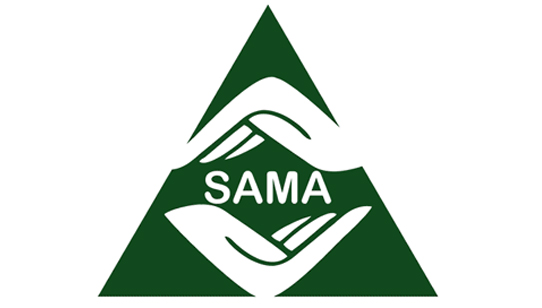



.png)


